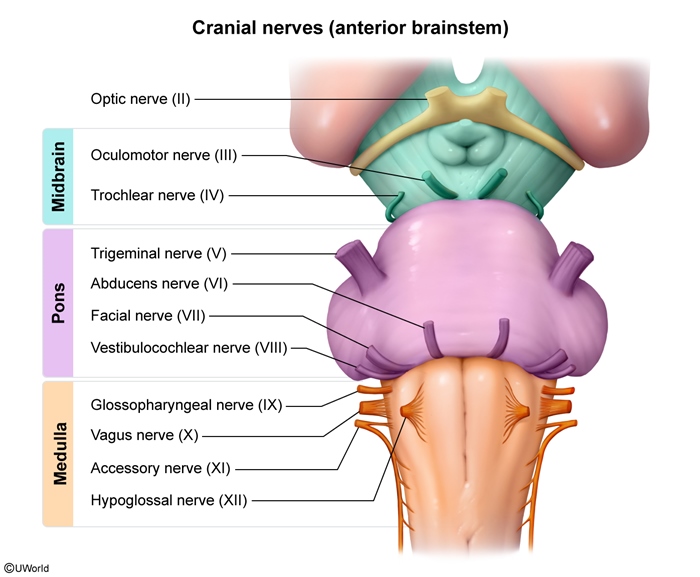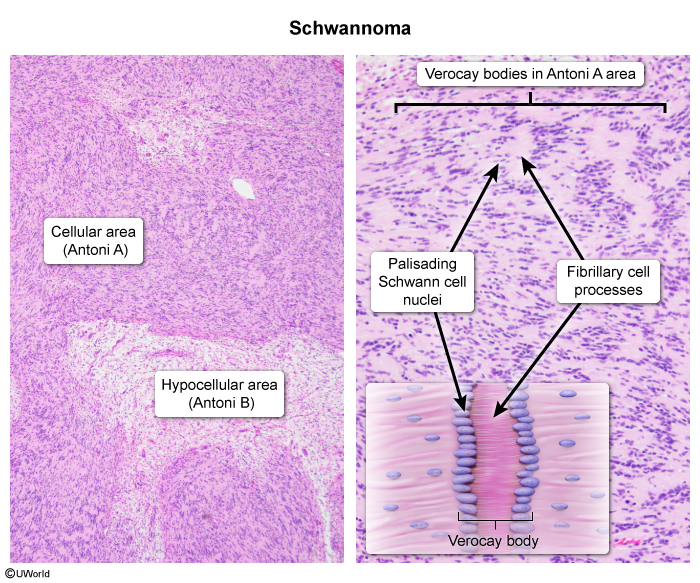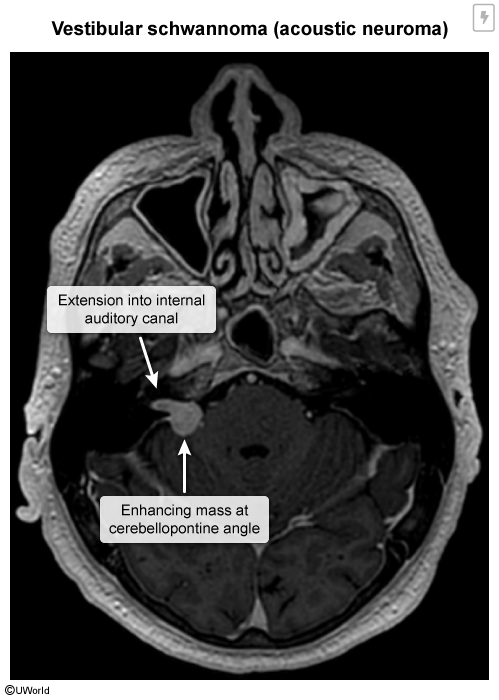Vestibular Schwannoma (Acoustic Neuroma)
Article Sections
Introduction
Vestibular schwannomas arise from the Schwann cells surrounding the vestibulocochlear nerve (CN VIII) and are usually located at the cerebellopontine angle. They usually present with ipsilateral sensorineural hearing loss (SNHL) with tinnitus and often some unsteadiness. In addition, they can cause dysfunction of nearby cranial nerves including the trigeminal nerve (CN V) (ipsilateral facial paresthesia and diminished corneal reflex) and facial nerve (CN VII) (ipsilateral facial paresis).
Pathophysiology
Vestibular schwannomas arise from the Schwann cells surrounding the vestibular portion of CN VIII, which exits the brainstem from the pontomedullar junction (Figure 1) lateral to CN VII and enters the cerebellopontine angle (Figure 2) (ie, between the cerebellum and lateral pons). Most are sporadic and unilateral, but patients with neurofibromatosis 2 (NF2, described in detail in a separate article) often present with bilateral vestibular schwannomas (
Continue Learning with UWorld
Get the full Vestibular Schwannoma (Acoustic Neuroma) article plus rich visuals, real-world cases, and in-depth insights from medical experts, all available through the UWorld Medical Library.
Figures



Images

